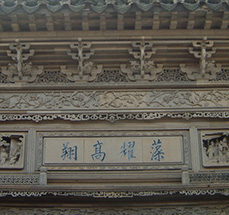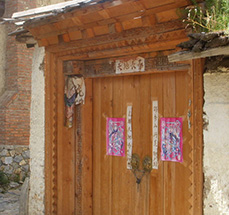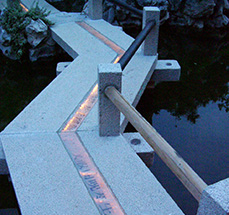Dignity, sympathy, participation
Calligraphy, a participatory and pervasive art
Calligraphy – or more exactly words – have a strong place in the decoration of all manner of spaces and architecture. These range from public inscriptions placed by the authorities to recognise individual merit, to everyday wishes for good fortune liberally distributed around entranceways and gardens.
The models for these works were often prepared by literati, but also not uncommonly undertaken by artisan calligraphers. There is a spectrum extending from elite and rare artwork (or souvenirs from famous hands) to folk art appreciated for its vigour and directness. In material form, it ranges from permanent inscriptions in stone and plaster, to calligraphy on paper occasioned by seasonal requirements, such as wishes for New Year that gradually deteriorate with the passage of the months.
Contemporary artists such as YE Fang continue to explore how to integrate texts and letterforms into environments, as in this etched glass lighting set into a bridge in a new garden in Suzhou.
 |  |  |
| Residential gateway, Suzhou Qing period (1644-1911) Photo, 2004 | Weathered New Year's texts House of LIN Hong Shangrila, Yunnan Sept 2008 | Garden of YE Fang Suzhou, 2004 Photo, 2004 |